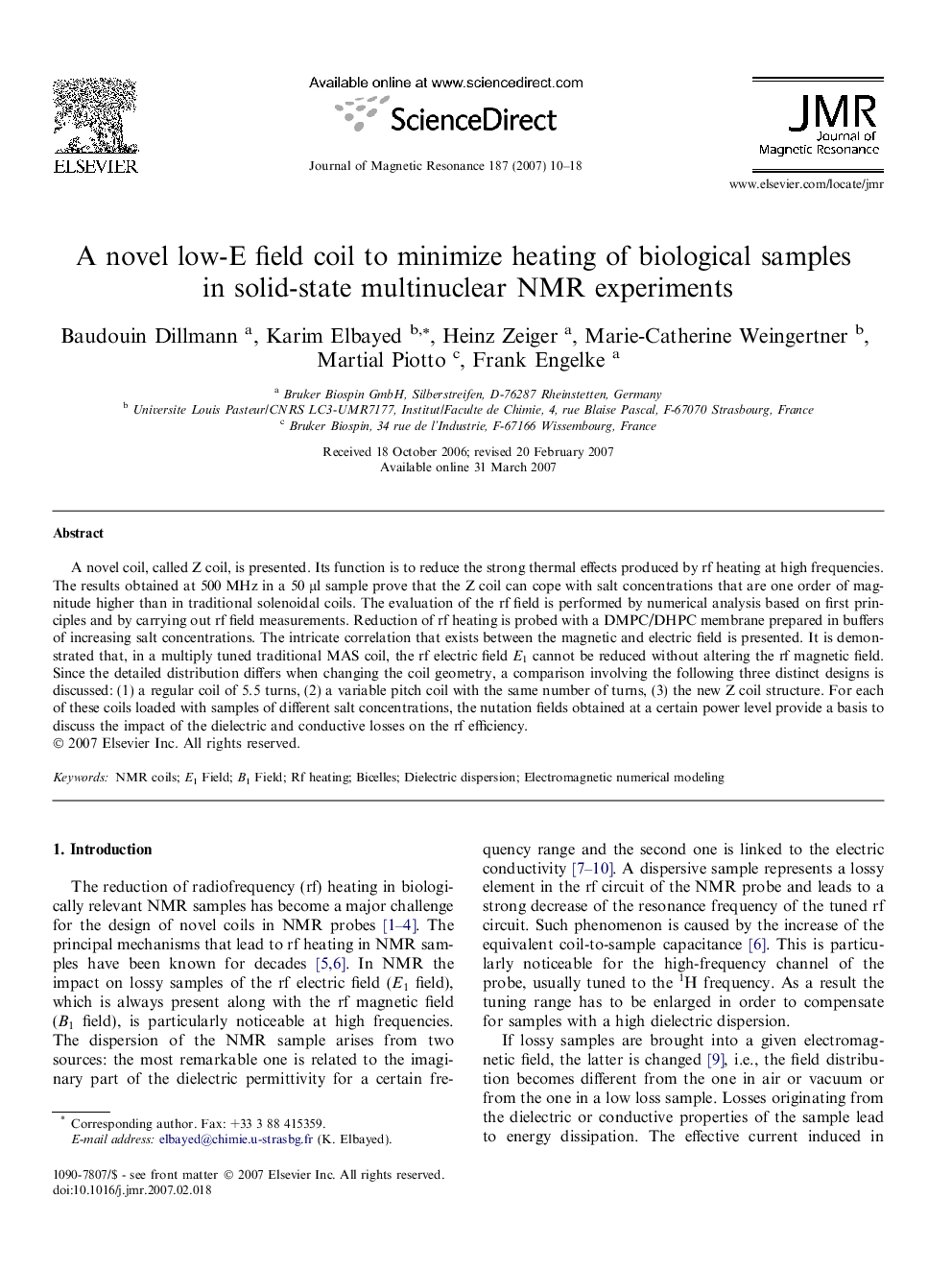| Article ID | Journal | Published Year | Pages | File Type |
|---|---|---|---|---|
| 5407349 | Journal of Magnetic Resonance | 2007 | 9 Pages |
Abstract
A novel coil, called Z coil, is presented. Its function is to reduce the strong thermal effects produced by rf heating at high frequencies. The results obtained at 500 MHz in a 50 μl sample prove that the Z coil can cope with salt concentrations that are one order of magnitude higher than in traditional solenoidal coils. The evaluation of the rf field is performed by numerical analysis based on first principles and by carrying out rf field measurements. Reduction of rf heating is probed with a DMPC/DHPC membrane prepared in buffers of increasing salt concentrations. The intricate correlation that exists between the magnetic and electric field is presented. It is demonstrated that, in a multiply tuned traditional MAS coil, the rf electric field E1 cannot be reduced without altering the rf magnetic field. Since the detailed distribution differs when changing the coil geometry, a comparison involving the following three distinct designs is discussed: (1) a regular coil of 5.5 turns, (2) a variable pitch coil with the same number of turns, (3) the new Z coil structure. For each of these coils loaded with samples of different salt concentrations, the nutation fields obtained at a certain power level provide a basis to discuss the impact of the dielectric and conductive losses on the rf efficiency.
Related Topics
Physical Sciences and Engineering
Chemistry
Physical and Theoretical Chemistry
Authors
Baudouin Dillmann, Karim Elbayed, Heinz Zeiger, Marie-Catherine Weingertner, Martial Piotto, Frank Engelke,
